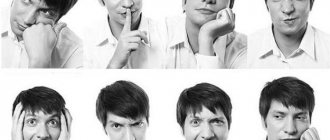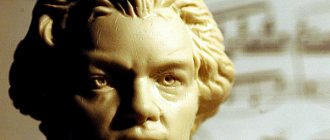Understanding your thoughts through mindfulness
To change your thoughts, you need to understand how your thought processes work. It sounds simple, but it's a little more complicated than you might expect.
Our mind works like a computer all the time, not just when we are actively paying attention to something or trying to understand something. When you drive, take a shower, read or watch TV, your mind goes wild. Mindfulness proponents call this "monkey mind."
Your brain tends to switch off from the monkey mind, but it still has a huge influence on the way you think and feel. Learning to pay more attention to your monkey mind can be challenging, but it can help you understand and actively change your outlook.
One of the best ways to understand your monkey mind is through a process called mindfulness meditation." Commonly used to reduce stress, this mental exercise can also help you understand and change your thinking and behavior patterns.
To begin, sit or lie down comfortably. Close eyes. Focus on your breathing. You don't have to change your breathing to make it deeper or slower, just pay attention to how your breath moves in and out of your body. You'll likely only be able to focus on your breathing for a few moments before your monkey mind intervenes. Everything is fine. Simply notice what the thought was and return to focusing on your breathing. Try to do this for at least five minutes. Towards the end of the day, you may have noticed a trend in the thoughts that were distracting you. Try to do this exercise at least once a week, but work for at least five minutes a day.
Once you do this, you should be more aware of what your monkey mind is telling you throughout the day. If you're actively trying to change for the better, chances are it's your monkey mind holding you back. Being able to intercept it can help you prevent it from determining your behavior.
Correct behavior in the company of business people
Generally accepted business etiquette represents rules that are designed to coordinate relationships between colleagues, management, business partners, etc.
The formation of business relationships is influenced not only by etiquette, since it regulates only external behavior. A person needs to be cultured and have high moral principles in order to implement all the norms of business etiquette.
The foundations of business relationships were formed at the beginning of the 20th century. and remained unchanged:
- respect and compliance with laws;
- honor and justice;
- respect for private property rights;
- keeping promises;
- spending commensurate with income;
- healthy competition based on compliance with laws.
Important rules of business relations:
- Responsibility and honesty help in forming long-term and effective relationships between partners and colleagues.
- Diligence - a committed person inspires respect and trust, which contributes to more effective interaction.
- Subordination – serves as a tool in the process of regulating business relations between superiors and subordinates.
- Love for their profession, dedication to the company - such people are valued in the team, and management trusts them.
- A friendly attitude towards your colleagues and business partners.
- Competence – avoiding mistakes and meeting deadlines for completing tasks.
- Punctuality – you should arrive at business meetings strictly on time.
- Competitiveness – the presence of knowledge and skills, thanks to which an employee can apply for a position, having a competitive advantage over other applicants.
- A neat appearance – the way a person looks can tell others a lot. Therefore, you should pay attention to your image.
- Feedback – building trusting relationships between employees in an organization is key: corporate culture influences the work of the team, increasing or decreasing its effectiveness.
Understanding Your Behavior Patterns Using Retrospection
Your monkey mind can control your behavior, but your behavior is easier to observe than your monkey mind. Chances are, if you're interested in changing your thoughts and behavior patterns in the first place, it was probably your behavior that let you know something was wrong.
Monitoring your behavior is an active effort, but it does not have to involve meditation. It just has to involve paying attention to how your behavior makes you feel. Sometimes the behavior you want to change is the behavior you have made a habit of. This means that it can be difficult not to do it, even if you regret it later. So, treat this behavior the same way you treated your intrusive thoughts in the mindfulness exercise above. That is, don't beat yourself up, just pay attention to how they make you feel and see what trends you can notice. This can do two important things.
First, it can help you understand chains of events that can lead to unwanted behavior or isolated events that can trigger behavior. For example, perhaps you only engage in undesirable behavior when you are with certain people, or if you were drunk, or when you had a bad day at work. Once you understand what leads to unwanted behavior, you may find that you can interrupt the chain of events.
Second, reminding yourself of the negative feelings you experience after performing an unwanted behavior can help you stay away from it. Sometimes we know we are discussing the possibility of engaging in negative behavior, but we may forget how it makes us feel later. By reminding yourself of your past regrets about your behavior before you do it, you can convince yourself that the behavior is not worth it.
Temperament, character, behavior style and personality type
Sow an action and reap a habit
sow a habit and reap a character,
sow character, reap destiny!
W. Thackeray
The origins of these classifications come from ancient philosophy and medicine. These are China and India (8th century BC), Greece (5th century BC), Rome (2nd century AD), England and Germany (19th century), Russia and the USA ( XX century). A huge number of them have been developed in the world, but they have not stood the test of time. Most often there are references to the classifications of Hippocrates and Galen, which are based on the humoral theory and have no direct relation to the psyche. The most determined classification of the types of the nervous system is I.P. Pavlova, but it is also four-digit.
The history of science has already accumulated a large amount of empirical and experimental material, but it does not lend itself to coherent systematization due to the lack of a unified international classification, which is a factor hindering the further development of the typology itself. There were also some oddities in this difficult matter. For example, Charles Fourier described 300 characters that an ordinary person is not able to remember. Since then, the primary task for scientists has been to search, find and recognize the optimal number of types. We believe that seven types meet all the requirements of this long-standing problem.
TEMPERAMENT
The world we are born into is rough and cruel, but
at the same time full of divine beauty.
Which element outweighs – meaning or
meaninglessness is a matter of temperament.
Carl Jung
Temperament or type of psychophysiological constitution ( Genotype ) is an unconscious in nature, hereditary basis of individual typological differences in the psychodynamic properties of the central nervous system at the gene level, localized in chromosomes.
Neurophysiological potential gives the human psychophysiological constitution seven key properties: emotionality, dynamism, lability, plasticity, staticity, inertia and sensitivity. As a result of the dominance of one of these properties over the others, the corresponding type of psychophysiological constitution is distinguished.
1.
Emotional –
anxious.
A representative of this type is genetically predisposed to a quick and vivid manifestation of mental experience and emotional excitement in the form of intense anger or joy. His mental activity is full of vivid emotions. This is an easily excited, excited and overly irritable person who has a high level of energy mobilization of the body. Figuratively - “hawk”.
Remember about the dormant potential and do not awaken it, for “A man is worse than a beast when he is a beast.” R. Tagore
2.
Dynamic –
active.
Always on the move, has inner strength and intense activities throughout his life. Active and energetic. The balance and ease of excitation and inhibition give balance to his nervous system, which determines the speed and success of the individual’s initial adaptation to new conditions. Figuratively - “eagle”.
Like the legendary Rustam, sung in the Shahnameh: “Like a poplar, he rose with a proud head, gifted with intelligence and good speech. He is the receptacle of spirit and reason, and the world of the dumb is subordinate to him.” Ferdowsi
3.
Labile -
sliding.
Changeable, unstable and functionally extremely mobile. The efficiency of its basic neurophysiological processes becomes a prerequisite for maximum adaptability, that is, the individual’s adaptability to rapidly changing environmental conditions. Figuratively - “magpie”.
Enviable unsinkability: “Human nature is so strong and elastic that it can maintain its freshness and beauty in the midst of the most oppressive ugliness of the environment.” D. Pisarev
4.
Plastic –
moldable.
Harmonious, smooth and flexible. Extremely balanced neurophysiological processes and a balanced nervous system with optimal strength and endurance give the individual excellent adaptability. He has a natural ability for a high degree of self-preservation and survival by avoiding danger. Figuratively - “ostrich”.
It is no coincidence: “We often, just to justify ourselves in our own eyes, find many things impossible for us.” F. La Rochefoucauld
5.
Static -
even.
Active movements and actions are outwardly unnoticeable. Neurobiological processes occur in a state of relative rest and balance. Figuratively - “swan”.
Caring parting words for the unperturbed: “In a moment of indecision, act quickly and try to take the first step, even if it’s an extra one.” L. Tolstoy
6.
Inert –
solid.
At first glance, he is inactive and lacks initiative. His overall motor activity is simply low, and neurophysiological processes are somewhat slowed down, but his nervous system is extremely balanced and quite resilient. There is a saying: if you don't wash, you just ride. Psychophysiological processes proceed rationally. Figuratively - “goose”.
Even in Ancient Rome they appreciated: “An arrogant and stubborn person does everything in his own way, does not listen to anyone’s advice and soon becomes a victim of his own delusions.” K. Aesop
7.
Sensitive -
empathetic.
It is very sensitive, especially to subthreshold stimuli, and therefore subtly reacts to any minor, even the weakest, influences of environmental factors. Predisposed to affective reactions, extremely impressionable. Figuratively - “owl”.
On the other hand: “A person who is quick to make decisions usually makes more mistakes than someone who decides slowly: but one must mercilessly condemn slowness in execution when everything has already been decided.” F. Guicciardini
CHARACTER
Character is not born with a person, but
acquired by him during his upbringing,
finally becoming established
in the subsequent troubles of life.
N. Dobrolyubov
Character ( Phenotype )
is a set of stable individual characteristics of mental activity that develops in the process of adaptive ontogenetic development.
It is based on the psycho-physiological constitution and is formed by upbringing. Psychophysiological processes give seven distinct qualities to a person’s character: hysteria, impulsiveness, agility, conformity, correctness, criticality and sentimentality. As a result of the dominance of one of these qualities over the others, the corresponding type of character appears.
1.
Hysterical –
explosive.
Predisposed to a strong outburst of emotions, and sometimes a nervous attack, expressed in unexpected transitions from convulsive laughter to tears and vice versa. As a rule, he is in an extremely excited state. Characterized by increased irritability and fussiness. Often, inappropriate to the situation, mental activity is upset, and he quickly and easily switches to an inappropriate raised tone with a positive or negative connotation. This is the most unbalanced character, “without a rudder and without sails.”
A source of bizarre surprises: “The uneven man is not one and the same person, but several people: he multiplies himself as many times as he has new tastes and different techniques.” J. Labruyère
2.
Impulsive
– assertive.
Purposeful. Has a strong inner drive. Active, active, persistent. The volitional principle is clearly expressed. He is characterized by strong feelings, elation, accompanied by the desire to realize his potential, even in the presence of obstacles. These properties open the way to great creative impulses, and not only creative ones! Inclined to noble deeds. Somewhat adventurous nature. Lives by the principle: “Seven troubles - one answer.”
That is –
with a thirst for conquering heights: “Character consists of an energetic desire to achieve the goals that everyone sets for themselves.”
Goethe
3. Maneuverable –
dexterous
Able to avoid obstacles without much effort. Capable of quick and easy movement, reconstruction, alteration and rethinking. A pragmatist, he easily changes his views, beliefs and habits, extracting benefits and dividends from everything. Great master of intrigue. Changeable and courteous, and if necessary, he will be able to put another in an awkward position. Acts prudently and cunningly, avoiding potential troubles. Thanks to his resourcefulness, he skillfully uses the capabilities of others and skillfully manages his own reserves. Often resorts to tricks and maneuvers. The camouflage matches it. In a word, “The need for invention is cunning.”
In directing: “Art consists in the fact that the actor makes something alien, given to him by the author of the play, into his own.” E. Vakhtangov
4. Conformal –
pliable.
Always ready to act in accordance with the order established from above. Tries to meet the requirements of others. An obedient disposition allows him to adapt and obey others without conflict. The individual prefers, in most cases, passive acceptance of the existing order of things and prevailing opinions. The most accommodating person, beautiful in the harmony of his actions and smooth attitude towards other people. Compliant: In order to resolve a perceived conflict between personal and dominant outside opinions, he prefers to make concessions to others. In general, he should have “both the wolves fed and the sheep safe.”
Here the costs are inevitable: “When a person, who has assumed a character alien to him, returns to his natural one, it is as if he removes a mask from his face” J. La Bruyère
5.
Correct
- polite.
He knows how to calmly defend his principles. At the same time, he is quite friendly and sensitive to other people. Sometimes he is emphatically polite. In the eyes of others, he does everything right, without a hitch. It fully corresponds to the reasonable requirements of life. His behavioral parameters meet many social standards. In pedagogy, this type serves as a kind of standard for extreme types, because such a person is convenient for everyone, because he gives educators the least amount of trouble. As they say, “a learned fellow, but a pedant.”
Adequate not under compulsion: “Three abilities flow from worldly wisdom: to make excellent decisions, to speak accurately and to do what should be done.” Democritus
6. Critical –
legible.
He is unique in that he is inclined to subject his actions and actions, as well as the actions and actions of others, to a thorough analysis and the strictest uncompromising assessment in order to identify shortcomings and miscalculations. He often makes negative judgments about himself and others, which creates a lot of life problems for him. He is not so much enterprising as picky, and this pickiness comes from the best intentions. However, others often perceive all this as inertia and stubbornness. The individual has an analytical mind and is critical of everything, which is the main distinguishing feature of this type of character. His credo is measure twice, cut once. Synonym: “Nordic”.
And all because: “Character consists of the ability to act according to principles.” I. Kant
7. Sentimental –
refined.
Predisposed to excessive sensitivity. He has a sickly-tender and tearfully touching character. He is extremely impressionable, gentle, sugary, shy and touchy. Reminiscent of mimosa, inclined to dramatize events, can easily be moved and emotional. Usually addresses others too softly and condescendingly. He is the most kind-hearted and humane among other types. Under unfavorable living conditions, according to A. Chekhov, this is “a man in a case.” Prone to hyperanalysis or fruitless philosophizing. From L. Berne: “Sentimental people shake up their feelings long and tediously.” Potential inhabitant of the “Diogenes barrel”. But don’t forget that there are devils in still waters.
Still: “A will that does not decide anything is not a real will: a weak-willed person does not always reach a decision.” G. Hegel
BEHAVIOR STYLE
Behavior is a mirror in which
everyone shows their face.
Goethe
Style of behavior ( Ethotype )
is a conscious choice of morals and strategies of action, reflecting the type of innate psychophysiological constitution, formed character and value orientations of the individual.
The peculiarities of mental activity give a person’s behavior seven distinct characteristics: expressiveness, demonstrativeness, manipulativeness, compromise, tactfulness, categoricalness and depressiveness. As a result of the dominance of one of these characteristics over the others, the corresponding style of behavior becomes preferable.
1.
Expressive –
unrestrained.
Predisposed to excessively fast, often thoughtless actions. A fussy and superficial attitude towards everything. Expresses joy and despair too vividly. His experiences, often without a proper reason, contain emphasized nervous irritability. He tends to vividly reflect his emotional state. Expressive both in life and in creativity. In the seven secular sciences of the Middle Ages - “musician”. A positive or negative person is a separate issue of culture, religion, morality, ethics, moral standards of spirituality.
In a word, much ado about nothing: “If a fool defeats a wise man with his chatter, then there is nothing surprising in this, for a stone can split a diamond.” C aadi
2. Demonstrative –
emphasized.
The main thing is to show your best side. External flashiness bordering on grotesqueness. A hedonist is able to mobilize all his forces to achieve a certain result, and then publicly advertise this achievement. "Rhetoric". His agility, quick wit and insatiable desire to be in the public eye ensure his resounding success. Or failure.
In fact: “A noble man is unshakable, but not stubborn.” Confucius
3.
Manipulative –
resourceful.
He knows how to cleverly divert the attention of others from what should be hidden from them. He has a talent for skillful forgery. Perfectly avoids sharp corners. Capable of skillfully managing others, influencing them, processing his voters, and can manipulate and falsify facts. "Arithmetician". His clever tricks are aimed at achieving easy results and significant benefits for himself.
The sea is up to their knees: “They are so good at deception and robbery that the devil himself, seeing all this, is surprised; even the devils can envy them.” A. Navoi
4.
Compromise -
compliant.
Easily reaches an agreement through mutual concessions. This is a conciliator and a compromiser. From Stendhal: “Flexibility of mind can replace beauty.” He often changes his survival tactics, and often his principles, which he is not rich in anyway. "Grammar." Outwardly, he has refined manners and does not always have a true sense of self-worth. However, most people value this style of behavior because such a person causes the least problems for others. Accordingly, and benefits.
Stagnation is only a consequence: “Without character, a person cannot get out of his uncertainty, or from one direction he falls into another, the opposite one.” G. Hegel
5.
Tactful -
courteous.
He has a sense of proportion, which prompts him to take the most delicate line of behavior towards others. Endowed with principles that he does not particularly stick out. He is characterized by uniformity and smoothness of actions. A sense of proportion in everything predetermines and develops the ability to behave in a decent and appropriate manner. "Geometric". In many nations (especially in civilized countries) and in many families, this style of behavior serves as an unspoken standard in matters of education. The phenomenon lies in the fact that here two natural antagonists coexist most harmoniously: conviction and lack of conflict. This is a kind of consensus, agreement within oneself.
The absence of a destructive principle does not mean a creative one: “Correct behavior suffers more from a lack of will than from a lack of knowledge.” G. Spencer
6.
Categorical -
unambiguous.
The approach to oneself and others is clear, unambiguous, unconditional and unambiguous, not allowing, as a rule, objections. Logical judgments are completely definite and exclude any ambiguity. The worldview is not veiled, clear and clear, not allowing other interpretations. In actions - straightforward and decisive. Goethe was right when he said: “When ideas with character meet, phenomena arise that have amazed the world for thousands of years.” "Dialectician". He is true to his ideals and will not compromise his principles. Such a person in the East is a “black sheep,” and in the West he is one of many. Bright personality.
Confrontation leads to a dead end: “The will clings to trifles, to the meaningless, and it turns into stubbornness. Stubbornness becomes repulsive and prevents communication with others.” G. Hegel
7.
Depressed –
depressed.
For most of his life, this type is sad, painful, depressed, making others sad with his depressed mood. He has a genetic predisposition to this condition. Tendency to apathy and pessimism. Infinitely bad mood due to loss of fortitude. A person of this type is characterized by slowness, lack of initiative, fatigue and low self-esteem. "Astronomer". Drives, motives, and volitional activity are sharply reduced, which, oddly enough, gives scope to thoughts, imagination, abstractions and wild fantasies.
When life is downstream, in the stream: “All the treasures of wisdom do not bring even an insignificant good to the one who is afraid of determination; Why does a lamp shine when it is in the hand of a blind man?” From Hitopadesha
PERSONALITY TYPE
We guess talent by one single manifestation,
but to recognize the identity, it is required
long time.
G. Heine
Personality type ( Egotype )
is a fusion of innate and acquired socially determined qualities of an individual, consciously predetermining personal motivational orientation and ideological orientation to the surrounding reality.
Temperament, character and behavior together give an individual seven distinctive features: eccentricity, demonicity, combinatoriality, convergence, tolerance, Nordicity and egocentricity. As a result of the dominance of one of these signs over the others, the contours of the corresponding personality type are clearly outlined.
1.
Eccentric -
unpredictable.
Predisposed to sudden, sharp, contrasting antics in the form of excessive fun or aggressiveness. He is distinguished by his extreme originality of behavior and his tactless spontaneity. Actions amaze with their surprise and exaltation, that is, enthusiasm. Somewhat strange, original and sometimes eccentric. Everything in it is built on a bizarre displacement of familiar concepts. Illogical. Behavior is inconsistent and out of the ordinary. According to M. Cervantes: “Courage without prudence is recklessness.” Unstable extrovert. The status quo is “Reckless”.
Usually: “A mind that is too scattered is not capable of comprehending things.” D. Cardano
2.
Demonic -
domineering.
This is a brave, decisive and obsessed person, sometimes possessed. His responsiveness, sociability and generosity coexist with cunning, without which it is difficult to be a powerful person. A tribune, a merry fellow and the soul of society, he tends to suppress the will of others in order to remain in the spotlight longer. A person of predominantly conversational genre: eloquent, sociable and perky. His passion and ardor sometimes reach the point of mischief. Maximalist and virtuoso. Often extraordinarily gifted. The talent of an organizer and leader, the desire to become a leader in an individual is natural. His motto, according to Goethe: “Know yourself only through action, and not through contemplation.” Stable extrovert, facing the outside world. Hegemon. Status quo – “Leader”. The Persian poet Khosrow pointed out a paradoxical touch: “A narcissistic lion with claws and fangs. Touchy, like a flower with trembling petals.” This is where authoritarianism, totalitarianism, leaderism, patriarchy, repression and other excesses arise.
And not without reason:
“Action requires character, and a man with character is reasonable, has a definite goal in front of him and firmly pursues it.”
G. Hegel
3.
Combinatorial -
cunning.
Able to create a complex plan and system of techniques to achieve the desired useful-adaptive result. He knows how to achieve his goals through various machinations, maneuvering and maneuvering among natural and artificial barriers. The individual is intricate, sophisticated, and not immediately understandable to everyone. He has a special gift for tricks, tricks, and also for bluffing. This is basically a hidden personality type. Extroambivert. The status quo is “Player”.
Here all means are good: “A clever person without moral principles is inclined to turn out to be the most wicked and wild creature, base in his sexual and taste instincts.” Aristotle
4.
Convergent -
harmonious.
The type is conflict-free and usually prefers unobtrusive assimilation to others. Not only does he get along well in any heterogeneous environment, but he also creates a favorable climate around himself, neutralizing problems of interpersonal origin. He has a predominant attitude towards rapprochement and acquisition of similar behavioral characteristics of the object of imitation, if this makes sense. The purpose of life is to live peacefully with everyone, on terms of mutual benefit. Wasn’t it about them that the founder of Persian poetry Rudaki said: “A glorious name, reason, gentle disposition and health of the body. God gives all four good qualities to the noble.” Ambivert, that is, the golden mean. The status quo is “Peacemaker.”
Everything is within the bounds of decency: “Be strict with yourself and gentle with others. This way you will protect yourself from human hostility.” Confucius
5.
Tolerant –
patient.
This type is capable of showing unusual tolerance and condescension towards those close and distant, towards friends and strangers. As a rule, he is trusting of others. Tolerates psychological discomfort well. The typological feature of an individual is endurance, self-control, and the ability to endure adverse influences for a long time without significantly reducing adaptive capabilities. Introambivert. The status quo is “Soldier”.
The prudent one was asked:
– From whom did you learn wisdom? - Among the blind. After all, until they feel the place where they need to step, they will not move their foot. Saadi
6.
Nordic
– cold-blooded.
This type adheres to a view that places the individual “I” of a person, both his own and someone else’s, at the center of the entire universe. Respects all manifestations of healthy individualism. Sometimes this is a selfish person with a somewhat inflated self-esteem of his person. Focusing on his own interests, he stubbornly defends his views. Thoughtful and pedantic, often lonely. “For some reason, physicists are held in high esteem. Something lyrical in the pen,” said Boris Slutsky, pointing to the priorities of a technocratic society. A stable introvert, turned to his inner world. The status quo is “Constructor”.
A thorough reproach to romantics: “A strong-willed person triumphs over instincts, drives, whims, obstacles and all sorts of difficulties.” O. Balzac
7.
Self-centered
– isolated.
This type subtly perceives life changes. He is characterized by shyness, impressionability, a tendency to experience events over a long period of time, and a tendency toward increased moral demands on himself. Timid. Sometimes he is afraid of new situations, people and all kinds of tests. Unstable introvert. Status quo – “Philosopher”.
In the struggle for existence, not to mention the throne, chastity is clearly the loser: “If someone should prevent something bad, but does not do this, then this is cowardice; if it is great, then it is timidity.” B.Spinoza
In everyday life, we all use behavioral stereotypes. Avicenna’s thoughts are consonant here: “The essence is reflected in your being. She won't be able to remain a secret for long. Is it not because the essence of any nature is visible in action, as if in a mirror.” Template actions, verbal (verbal) cliches and standard thoughts protect our brain from excessive routine. In general, we, as a rule, do not think for a long time - our habits help us, about which A. Pushkin so aptly noted: “A habit has been given to us from above, it is a substitute for happiness.”
Habits themselves are components of our behavior style. Behavioral style is our essence, based on three pillars: psychophysiological constitution (temperament), character and personality type. Temperament is a hereditary trait. Character is formed around the age of 17. The formation of personality occurs around the age of 25. The evolution of character and personality begins from the moment a person is born. Temperament dominates on average until the age of seven. Then the innate property - the psychophysiological constitution - begins to intensively acquire acquired qualities, that is, character parameters. On the basis of neurobiological temperament, an individual character is formed, and then a social product - a personality type - with various inclinations.
At first, thanks to number theory, the author modeled a “Universal seven-digit classification”, which turned out to be in tune with the laws of symmetry and harmony, with religious dogma (in the Bible “seven” appears 144 times not by chance) and the canons of mathematics. It is also in tune with poetry. The poet A. Voznesensky drew attention to this in his own way: “I am a family. In me, as in a spectrum, there live seven “I”s, unbearable, like seven animals. And the blue one whistles into a pipe! And in the spring I dream that I am the eighth.”
Based on the achievements of modern science, I recommend a fundamentally new classification of three main levels of human essence: temperament - psychophysiological,
character –
psychological,
style of behavior –
social
. Behavioral style is habitual everyday life, that is, reasonable life activity based on stereotypes. Mostly consciously and partly subconsciously, intuitively. I note that this classification has been analyzed and reviewed more than once by scientists from Russia and the West.
This scientific work will help conduct an interesting psychological workshop and provide rich food for the mind and observation. What personality type does the person next to you belong to? Finally, what kind of character do you have?
In the typology proposed by the author, there is that bit of novelty that will allow you to see the familiar as if anew. Instead of the tired cholerics, sanguines, phlegmatics and melancholics, a completely different layout of the personality structure is given, allowing you to more fully and deeply reveal the character of a person, even someone you knew a long time ago.
So, turning to the new classification of personality structure, you, dear reader, further determine the types of psychophysiological constitution and characters; then you establish what type of personality you, as well as this or that person, can be classified as. And finally, using recommendations, you analyze the individual’s behavior style, which completes the characteristics, and you create a fairly complete picture of him.
Understanding your behavior patterns through others
Sometimes we don't understand what's wrong with our behavior; we only know that it hurts those around us. When this is the case, it may be difficult to control your behavioral patterns and feelings on your own as described above, but that doesn't mean you don't have hope.
If you don't understand how your behavior is hurting others, or even what behavior is causing the problem, you can often find out by asking them. It may seem a little awkward, but if you are sincere with others when you ask them, they will usually understand and offer their advice.
If you know what behavior you want to change, it will be easy for you to reach the people affected by it. Try starting the conversation with something like: “I'm trying to change X about myself, and I think it will help me if I understand how this makes others feel.”
If you don't know what behavior you want to change—you just know it needs to be changed—you may have a harder time finding people to talk to. Consider starting with people who are close to you, such as family members and colleagues. You don't have to start by "owning" your negative behavior. Instead, you can start the conversation with something like, “I'm trying to improve, but I don't know where to start. Are there things I do or say that upset you?”
This may feel like you're opening yourself up to some kind of harmful feedback. Facing the need to change your behavior can be difficult, but it is a journey you have already begun. If you're honest with someone when you ask them for help, they're less likely to use it as an excuse to make you feel bad. Try to remember that they have your best interests at heart, even if they give some feedback that is difficult to hear.
Signs of deviant behavior
There are clear signs that an individual’s actions are deviant behavior, namely
:
- Inconsistency with generally accepted social norms;
- Violation of these norms;
- Negative assessment of others, imposition of sanctions;
- Causing harm to yourself and others;
- Persistence – the antisocial act is repeated many times;
- Social maladjustment;
- The general orientation of the personality is destructive.
The last feature, however, is controversial. After all, the concept of deviant behavior also includes cases such as talent, genius, heroism and self-sacrifice. Such actions and manifestations also violate some established rules, but ultimately their goal is the creation, sometimes even the salvation of society.
Understanding your thoughts and behavior patterns through observation
Understanding where your thoughts or behavior patterns come from can help you change them for the better. Sometimes we don't know where our thoughts or behavior patterns come from. In other cases, however, we may recognize our negative thoughts or behavior patterns in those around us. Maybe these are the people we picked them up from. Sometimes we pick up negative behavior from our parents, colleagues or friends. We often realize that we are behaving inappropriately when we recognize ourselves in someone else.
Identifying where you picked up an unwanted behavior can help you understand how to avoid it, as well as where not to go for advice on correcting it.
We carry out self-presentation consciously or unconsciously, directly or indirectly.
For example, we can do this directly by naming our status, country or city where we came from, and marital status when meeting a person.
Self-presentation can also be carried out indirectly, with the help of hints and statements (“the last time I was in Paris ...”), a suit, emphatically elegant or casual, certain manners and attributes.
Self-presentation in professional communication* is extremely important.
We should not forget that when choosing a model of behavior, we depend not so much on ourselves, but on many external circumstances. This does not relieve us from personal responsibility for our behavior.
Why Some Behaviors Are Difficult to Change
Even when you understand what your negative behavior is, where it comes from, and what leads to it, you will find it difficult to change the way you think and behave. The reason for this may be complex, but there are a few major trends.
Some patterns of thinking and behavior are difficult to change because, even if you no longer want to engage in them, they are socially acceptable—or even encouraged. Prime examples include things like alcohol or substance use, overeating, and other activities. Whatever the behavior, it is likely to be rewarded in certain contexts or social settings. If this is the case, then you may need to remove yourself from that environment or social group to avoid urges to engage in your unwanted thoughts or behavior patterns.
Some negative behaviors may be reinforced by your body, making them even more difficult to overcome. Some negative behaviors make us feel good because they are based on or mimic healthy behaviors and confuse your body's chemical reward system. If you indulge in these behaviors too often, your body may begin to associate them with feel-good hormones, leading to a behavioral addiction that is chemically similar to a substance use disorder. This may be due to eating certain foods, playing video games, having sex, and other activities.
Types of behavior
In society, there are behavioral models based on the actions of past generations, and therefore a variety of forms of social behavior have developed. These include several different types.
Mass
This behavior is characterized by an emotional component that simultaneously captures the consciousness of a large number of people. Examples include panic, hysteria, following fashion, spreading rumors, rallies, holiday processions, challenges on social networks, etc.
Group
Depends on the form in which the goals of individuals are realized - in a team, based on interests or informally. Groups can distribute roles for subjects, focus on tasks, provide information, create material and spiritual benefits, organize actions that benefit society (volunteers), or, conversely, cause harm (extremists, terrorists).
Deviant
Behavior deviating from the norm is manifested in rejection of social norms, established foundations, customs, processes, and relationships between people. Deviations can manifest themselves in antisocial actions, nihilism, mental disorders, causing mental reactions to social processes. This type of behavior always receives a negative assessment from other members of civil society, since it seeks to deny the moral principles and legal foundations of the existence of individuals.
Competitive
Based on the desire for leadership and the most favorable conditions of existence in society. This type of behavior is used between opponents in government or party organizations, producers of goods and services, groups of entrepreneurs, and resembles a competition for the most favorable conditions. Therefore, this behavior is divided into subtypes: creative, opportunistic, guaranteeing.
Illegal
This type is aimed at violating the rights and freedoms of another individual, and refers to offenses. A person intentionally or accidentally causes harm to another person. Actions (causing bodily harm) and inaction of subjects (leaving a person in danger) depend on various reasons that prompted a person to behave negatively, violating established rules and laws in force in society. Examples of illegal behavior include creating an emergency on the road, hooliganism, or insulting another person.
Antisocial
Characterized by a sharp negative attitude towards society, denial of all existing norms and standards of correct behavior, the individual’s desire to oppose the accepted rules with all his might. This type can be characteristic of both a specific individual and a group of subjects. Antisocial behavior manifests itself in gross violations of the law, vandalism, trampling and non-recognition of social rules and principles. All actions that an individual or a particular group commits are directed against society.
Helping
It consists of providing assistance and assistance from one individual to another. This happens when subjects (volunteers, sponsors, philanthropists) who are not indifferent to the problems of another person appear in society. The social service that exists in the state also belongs to the helping type. This form can exist on reciprocity, when people do not abandon each other in trouble, as well as on unilateral influence, when only one side is involved in solving a person’s problems.
Prosocial
It belongs to the category of helping, and is completely in tune with it, but at the same time the help is carried out on a large scale and affects the mass part of society. Can be on a unilateral or mutual basis. Examples include assistance from the Council of Europe to developing countries, provision of an IMF loan, allocation of funds for the development of cultural centers, maternity capital (in the Russian Federation), assistance from city mayors at the birth of a child, and the creation of charitable foundations. Such assistance is based on kindness, material assistance and psychological support.
Any forms of social behavior are based on the emotional manifestation of the mutual attitude of individuals towards each other, and are carried out in the form of friendship, love, good, evil, enmity, success, power, cooperation. Also of particular importance are morals and foundations, traditions and customs, which contain patterns of behavior that do not contradict social norms.
Therefore, the behavior of individuals can be:
es parental;
ritual.
The natural is characterized by the achievement of individual goals, norms and capabilities of subjects. Ritual is based on a certain sequence of actions that are inherent in a particular society. There are also other forms of behavior - parental, cooperative, aggressive, etc.
There are many examples of types and forms of social behavior during the same process. For example, during a demonstration or rally, some people behave in an organized and cultural manner, while others behave illegally, trying to organize mass unrest, destabilize the situation and provoke the crowd to commit illegal actions. The presented example of action or inaction fully characterizes the essence of the concept of social behavior.
Social norms: general concepts
Norms of human behavior in society are a rather multifaceted concept that reflects the forms of interaction of an individual with the world around him.
A person as a social unit must be guided by the rules and customs established in a particular society. Each specific situation has its own set of rules, which, however, are not fixed. Thus, actions that are acceptable in one society are categorically unacceptable in another. On the other hand, social norms of individual behavior can change depending on the situation and time. For example, imagine that you met with old friends with whom you have been friends for many years. You can allow yourself to be free, to wear what you think is necessary, not to be shy about expressions containing profanity, cheeky gestures and bad habits. Friends are used to you and perceive all your actions as the norm. Now imagine that you come to work for a large corporation and plan to achieve considerable career success here. Your image, actions and gestures in this situation will be radically different from the previous situation: your appearance corresponds to the dress code, your speech takes on a business-like tone, bad habits are veiled as much as possible. But a year or two later you go with your employees to a long-planned corporate party. In this situation, you can allow yourself to show a part of your true self. After all, despite the fact that the composition of society has not changed, the situation has changed, and too restrained behavior may be perceived by others as distrust or hostility on your part.
If norms of behavior can be mobile, then the fundamental principles that determine behavioral manners and outlook on life must have clearer boundaries.
Standards of behavior between spouses
To build a stable house, you need to lay a solid foundation and build the walls brick by brick. So in family relationships - love is the foundation, moral standards of behavior are the building blocks.
Married life is not only about joyful moments, it is also about disappointment, irritation and resentment. In order to get through all the unpleasant moments with dignity and maintain the integrity of the marriage, you need to follow a few simple rules:
- treat your partner as an equal; - appreciate his personal qualities; — support in any endeavors and do not ridicule failures; — discuss important points and make decisions together; - do not resort to insults and insults; - do not allow yourself to be assaulted; - be faithful to your spouse.
Sanctions for non-compliance
Rules and norms of behavior are regulated by approved state laws and unspoken rules of society.
Sanctions for deviant behavior vary depending on the severity of the violation.
For example, murder or robbery falls under the article of violation of the criminal code, therefore, is punishable by imprisonment. Provocation or fight are administrative violations. As a punishment for the misdemeanor, the violator will be asked to pay a fine or perform civil work. Violations associated with habits (not washing the dishes after yourself, not cutting your nails, being late for an important meeting, lying) will cause social disapproval and further ignoring or contempt.
What is deviant behavior
Under deviant behavior
It is common to understand actions that contradict established social norms.
The persistent manifestation of deviations forces society to apply sanctions to this person - isolation, punishment, correction, treatment.
Simply put, deviation is a violation of any rules. In this regard, psychologists claim that the vast majority of people on the planet are deviants. Indeed, it is difficult to live your whole life without violating a single established rule - this means not only state legislation, but also some informal regulations, such as the need to communicate with friends in your free time. Too much work ethic (“workaholism”) and a passion for dieting are also deviations.










